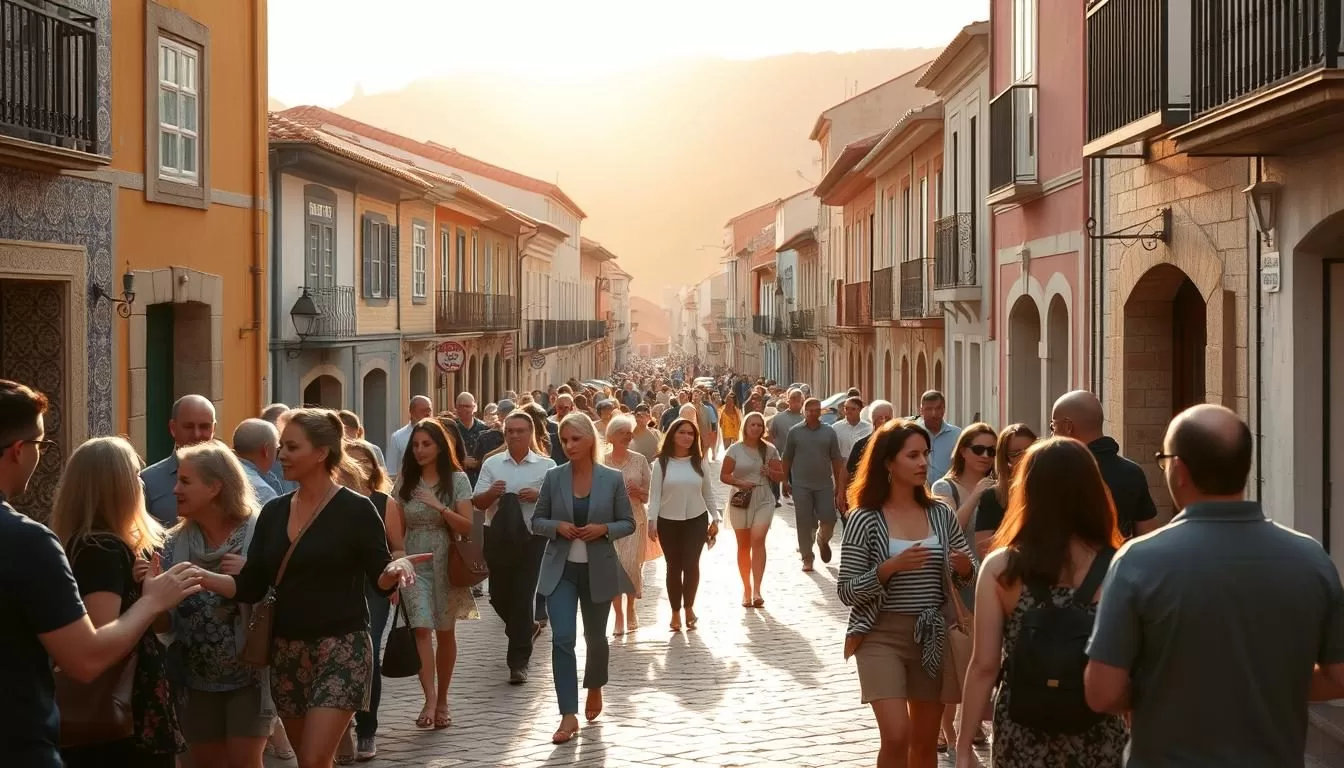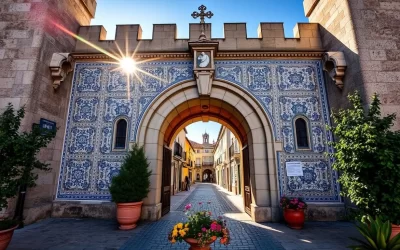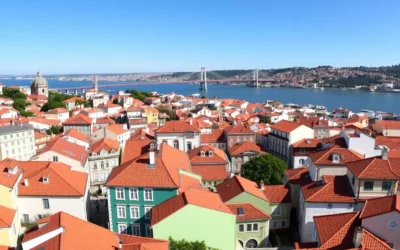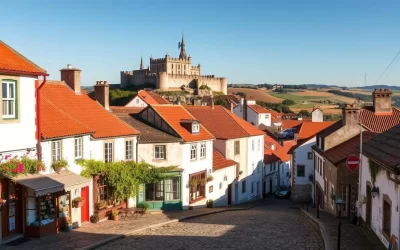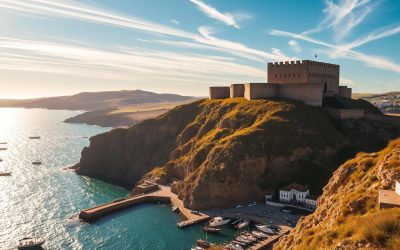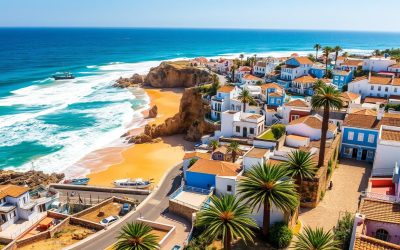✓ Accommodations✓ Flights✓ Rental Cars✓ Tours & Activities
When you think about the language of this vibrant country, Portuguese stands out as the primary mode of communication. Nearly 96% of the population speaks it as their first spoken language, making it the heart of daily life.
Tourism and international relations have brought other languages into the mix. English, French, and Spanish are commonly used, especially in urban areas and tourist hotspots. This blend of official language and foreign influences creates a unique cultural identity.
With a population of over 10 million, this country continues to preserve its heritage while embracing global connections. Whether you’re a person visiting or a speaker of Portuguese, the linguistic diversity here is truly captivating.
Understanding Portugal’s Linguistic Heritage
Exploring the roots of Portuguese reveals a fascinating journey through time. This romance language has deep historical ties, evolving from Vulgar Latin during the Roman occupation of the Iberian Peninsula around 218 BC. Over centuries, it absorbed influences from Germanic and Arabic cultures, shaping its unique identity.
Historical Roots and Evolution
The Portuguese language began as a dialect of Vulgar Latin, the common speech of Roman soldiers and settlers. By the 12th century, it emerged as a distinct romance language, with early writings like the Cancioneiro da Vaticana showcasing its poetic richness. King Denis of Portugal played a pivotal role in its development, decreeing in 1290 that official documents be written in Portuguese.
Geographical area also influenced its evolution. Border regions saw the blending of Portuguese with neighboring tongues, creating unique dialects. This linguistic diversity reflects the country’s rich cultural tapestry.
Cultural Influences from Rome and Beyond
Roman rule left an indelible mark on the language. Latin became the foundation, but later invasions by Germanic tribes and Moors introduced new vocabulary and expressions. These influences are still evident in modern Portuguese, making it a vibrant romance language.
Regional dialects further highlight this cultural blend. For example, Mirandese, a co-official language in some areas, preserves ancient linguistic traits. This diversity underscores the enduring impact of historical contacts on the language.
“Language is the road map of a culture. It tells you where its people come from and where they are going.”
Today, Portuguese is not just a language but a bridge connecting its speakers to a shared heritage. Whether you’re exploring its history or its modern forms, the story of Portuguese is one of resilience and adaptation.
Portugal: Official and widely spoken languages
The heart of national identity in this vibrant country beats through its language. Portuguese is not just a means of communication—it’s a symbol of unity and pride. Nearly the entire population speaks it, making it the backbone of daily life.
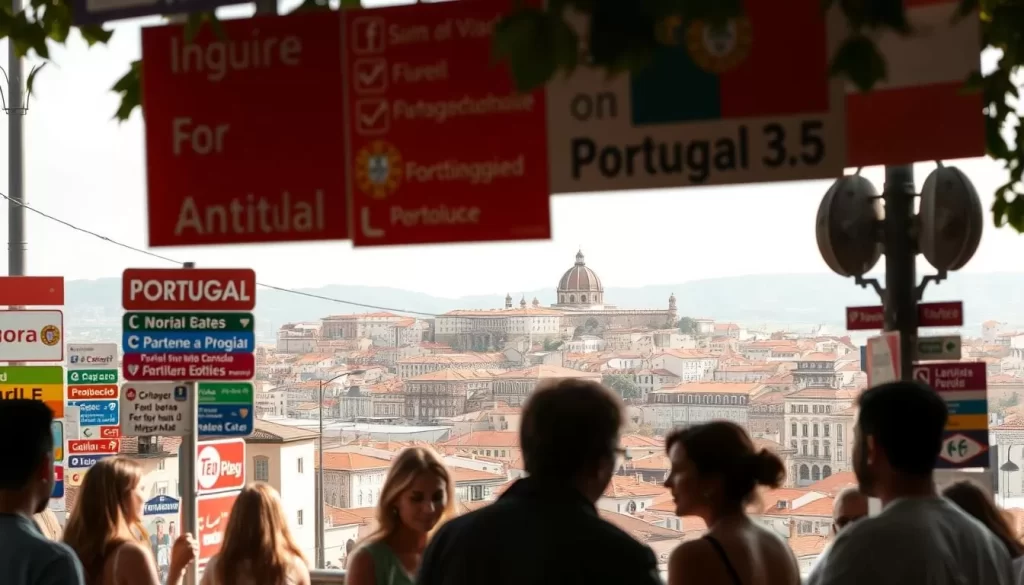
Portuguese as the National Identity
Portuguese is more than a language spoken here; it’s a unifying force. It connects people across regions, serving as a reminder of shared heritage. Historical documents and local literature showcase its role in shaping the nation’s identity.
This word of unity is also embedded in official functions. From government proceedings to cultural events, it plays a central role. It’s a testament to how deeply it’s woven into the fabric of society.
Regional Dialects and Variations
While Portuguese unites the country, regional dialects add diversity. These variations reflect the unique history and culture of different areas. For example, Mirandese, a co-official language, is still preserved in some regions.
These dialects enrich everyday communication, offering a glimpse into the local way of life. They highlight the adaptability of the language while maintaining its core identity.
“Language is the road map of a culture. It tells you where its people come from and where they are going.”
Portuguese in this part of the world is both a national emblem and a bridge between diverse regions. It’s a living testament to the country’s rich cultural tapestry.
Exploring Popular Foreign and Minority Languages in Portugal
Discover how foreign and minority languages enrich the cultural fabric of this region. While the dominant tongue unites the nation, other languages spoken here add layers of diversity and connection. From bustling cities to quiet villages, these linguistic influences shape daily life and interactions.
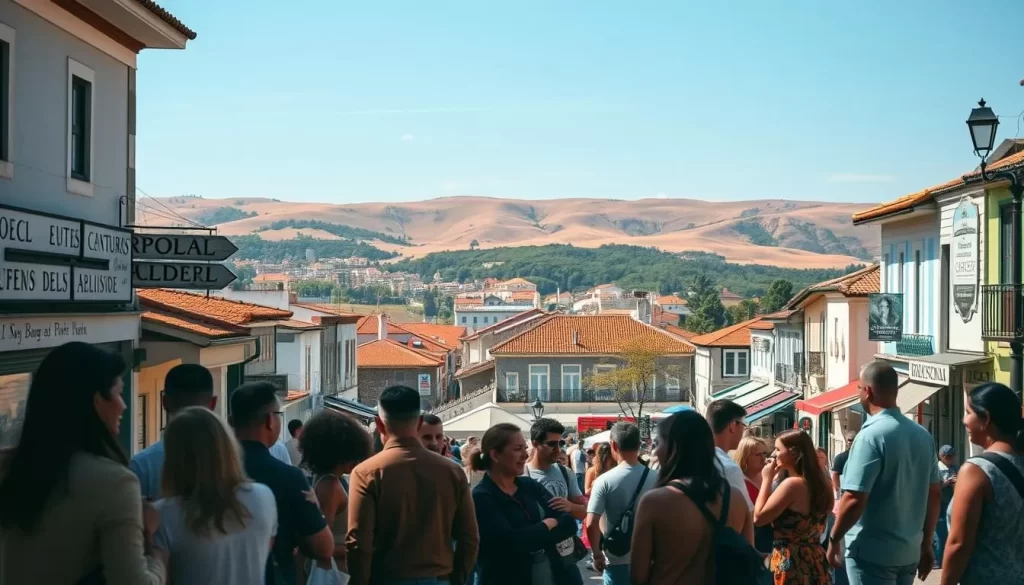
The Rise of English and Its Role in Tourism
English has become a key language spoken in urban centers and tourist hotspots. Cities like Lisbon and Porto see widespread use of English, making it easier for visitors to navigate and connect. This trend reflects the country’s growing focus on tourism and global engagement.
Over time, English has also gained importance in education. Schools now teach it from an early age, ensuring that younger generations are bilingual. This shift highlights the evolving role of English in shaping modern communication.
Mirandese, Spanish, and French: A Closer Look
Mirandese, a minority language spoken in the northeast, holds official recognition in its region. It’s a testament to the country’s commitment to preserving linguistic heritage. While less common, it remains a vital part of local identity.
Spanish and French, once widely used, have seen a decline in recent years. Older generations still speak French, especially in academic settings, but its use has faded among younger populations. Spanish, on the other hand, remains popular due to geographical proximity and cultural ties.
These languages, alongside Portuguese, create a rich tapestry of communication. They reflect the country’s history and its openness to global influences. Whether you’re a visitor or a local, this linguistic diversity offers a unique way to connect with the culture.
Impact of the Portuguese Language Globally
The global reach of the Portuguese language is a testament to its enduring legacy. Spoken by over 250 million people, it ranks among the top ten most widely spoken languages worldwide. This common language unites nations across four continents, creating a unique cultural and linguistic bond.

Lusophone Countries and International Influence
The Portuguese language serves as the official tongue in ten countries, including Brazil, Angola, and Mozambique. These Lusophone nations share not only a common language but also a rich history rooted in centuries of exploration and cultural exchange. Brazil alone is home to 200 million speakers, making it the largest hub of Portuguese speakers globally.
This language family, part of the Indo-European group, evolved from Latin during the Roman era. Over the centuries, it absorbed influences from Arabic, Celtic, and other cultures, shaping its unique identity. Today, it remains a vital tool for communication in international organizations like the CPLP and the European Union.
“Language is the bridge that connects cultures, and Portuguese is one of its strongest pillars.”
The cultural significance of the Portuguese language extends beyond borders. From literature to diplomacy, it continues to play a pivotal role in shaping global interactions. Its presence in regions like East Timor and Cape Verde highlights its adaptability and resilience.
As you explore the world of Portuguese, you’ll discover a language that transcends geography and time. Its influence, rooted in centuries of history, remains a cornerstone of global communication.
Portuguese Language in Education and Daily Life
In the heart of this vibrant nation, language plays a central role in shaping daily life and education. The Portuguese official language is deeply woven into the fabric of society, from bustling cities to quiet villages. Today, it remains a cornerstone of communication, culture, and identity.
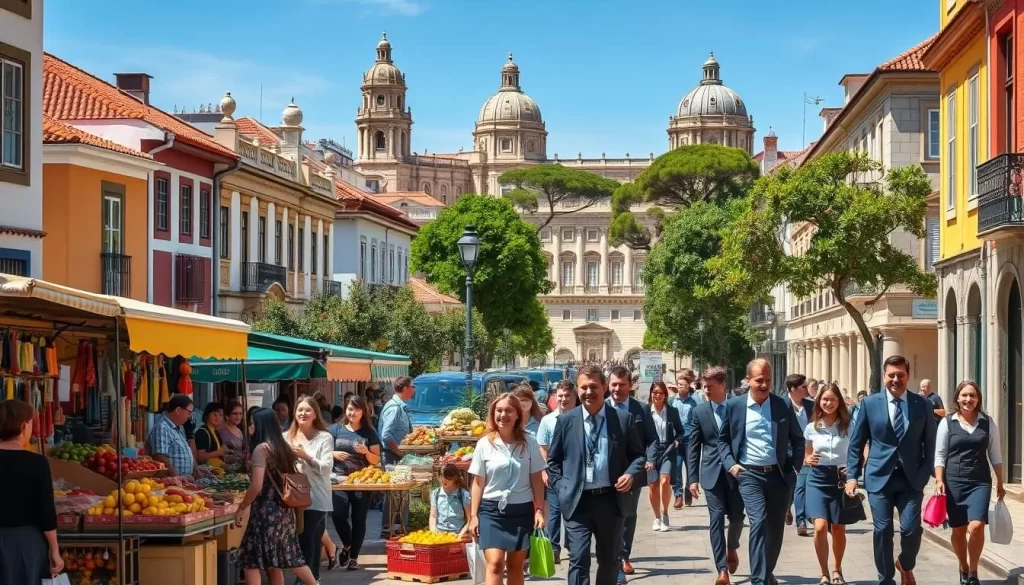
Bilingualism in Urban and Rural Settings
Urban centers often embrace bilingualism, with English widely used in business and tourism. Major cities like Lisbon and Porto see a growing number of students learning both Portuguese and English from an early age. This trend reflects the country’s focus on global engagement.
In contrast, rural areas tend to stick closely to traditional Portuguese usage. Here, the minority dialects and local expressions preserve a unique cultural heritage. This diversity highlights the adaptability of the European Portuguese language across different regions.
The Role of Education in Language Learning
The education system plays a key role in fostering bilingualism. Schools emphasize both the Portuguese official language and foreign languages, ensuring students are well-prepared for a globalized world. This approach helps bridge the gap between urban and rural communities.
From classrooms to daily interactions, language shapes the way people connect. Whether you’re a local or a visitor, understanding Portuguese enhances your experience. It’s not just a tool for communication—it’s a gateway to the culture and history of this region.
“Language is the key to understanding a culture, and Portuguese unlocks the heart of this nation.”
If you’re considering studying abroad, study in Portugal offers a unique opportunity to immerse yourself in this rich linguistic heritage. Whether in urban or rural settings, the Portuguese official language continues to unite and inspire.
Trends and Future of Language in Portugal
Modern technology is transforming how people connect and communicate here. The rise of digital media has created new ways for portuguese speakers to interact, blending traditional language with modern influences. This shift is reshaping the linguistic landscape, making it more dynamic and inclusive.
Evolving Language Practices in a Modern Era
Social media platforms are playing a key role in language evolution. Younger generations are adopting new slang and expressions, often influenced by global trends. This has led to a unique blend of traditional and modern communication styles.
Schools are also adapting to these changes. Many institutions now incorporate digital tools into their curriculum, helping students learn both the portuguese official language and global communication skills. This approach ensures that the next generation is well-prepared for a connected world.
Community Initiatives and Future Predictions
Local communities are embracing these changes while preserving their heritage. Programs aimed at teaching traditional dialects alongside modern Portuguese are gaining popularity. These initiatives ensure that linguistic diversity remains a vital part of the territory‘s identity.
Looking ahead, experts predict that the number of portuguese speakers will continue to grow. With a population of over 10 million person, this region is poised to remain a hub of linguistic innovation. The future of language here is bright, blending tradition with global connectivity.
| Trend | Impact |
|---|---|
| Digital Media | Increased use of slang and global expressions |
| Education | Integration of digital tools in school curriculums |
| Community Programs | Preservation of traditional dialects |
For more insights into the evolution of the Portuguese language, explore its rich history and global influence. This journey through time highlights how language adapts while staying true to its roots.
Cultural Celebrations and Language Festivals in Portugal
Festivals in this region are a vibrant celebration of culture and language. These events honor historical traditions while showcasing the deep connection between vocabulary, grammar, and national pride. From music to storytelling, language plays a central role in bringing communities together.
Traditional Festivals Reflecting Linguistic Pride
One of the most iconic events is the Camões Festival, held on June 10. This celebration honors the poet Luís de Camões, whose works are a cornerstone of the majority culture. It’s a time when native speakers gather to recite poetry and share stories, keeping the tongue alive.
Another highlight is the Festa das Vindimas, a grape harvest festival that blends local traditions with linguistic pride. Here, songs and speeches in the regional dialect highlight the richness of the vocabulary and its historical roots.
“Language is the soul of a culture, and these festivals are its heartbeat.”
For english speakers visiting, these events offer a unique opportunity to immerse themselves in authentic traditions. They also provide a platform for locals to share their heritage with the world.
These celebrations are more than just events—they’re a testament to the enduring spirit of the majority. They remind us how language connects people across generations and regions. Whether you’re a native speaker or a visitor, these festivals are a gateway to understanding the heart of this culture.
To learn more about these vibrant celebrations, explore Portugal’s cultural festivals and popular festivities. These links offer deeper insights into the events that make this region so unique.
Conclusion
Portuguese stands as a bridge between history and modernity, connecting millions across the globe. It’s not just a term for communication but a cultural cornerstone that unites people. With over 257 million speakers worldwide, it ranks among the top ten most spoken foreign languages.
This linguistic heritage reflects a rich blend of native and foreign language influences. From education to cultural celebrations, it shapes daily life and global connections. Its adaptability ensures it remains relevant in a rapidly changing world.
Take the time to explore this vibrant term and its cultural depth. Whether you’re a student or traveler, understanding Portuguese opens doors to new experiences. Dive deeper into its history and global impact with resources like this guide.
Language is more than words—it’s a reflection of identity and unity. Portuguese continues to inspire, proving its lasting significance in shaping societies worldwide.
The above is subject to change.
Check back often to TRAVEL.COM for the latest travel tips and deals.
